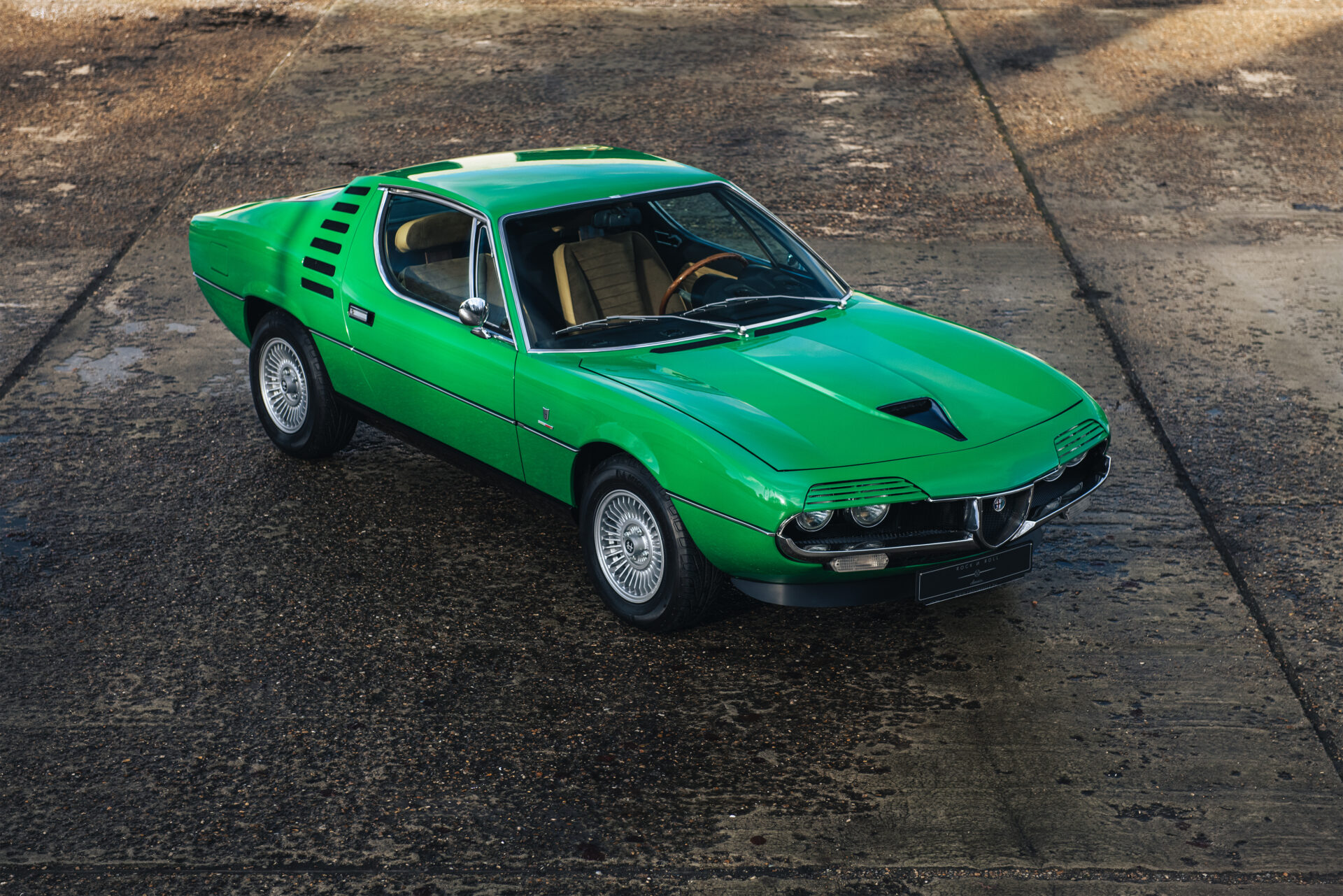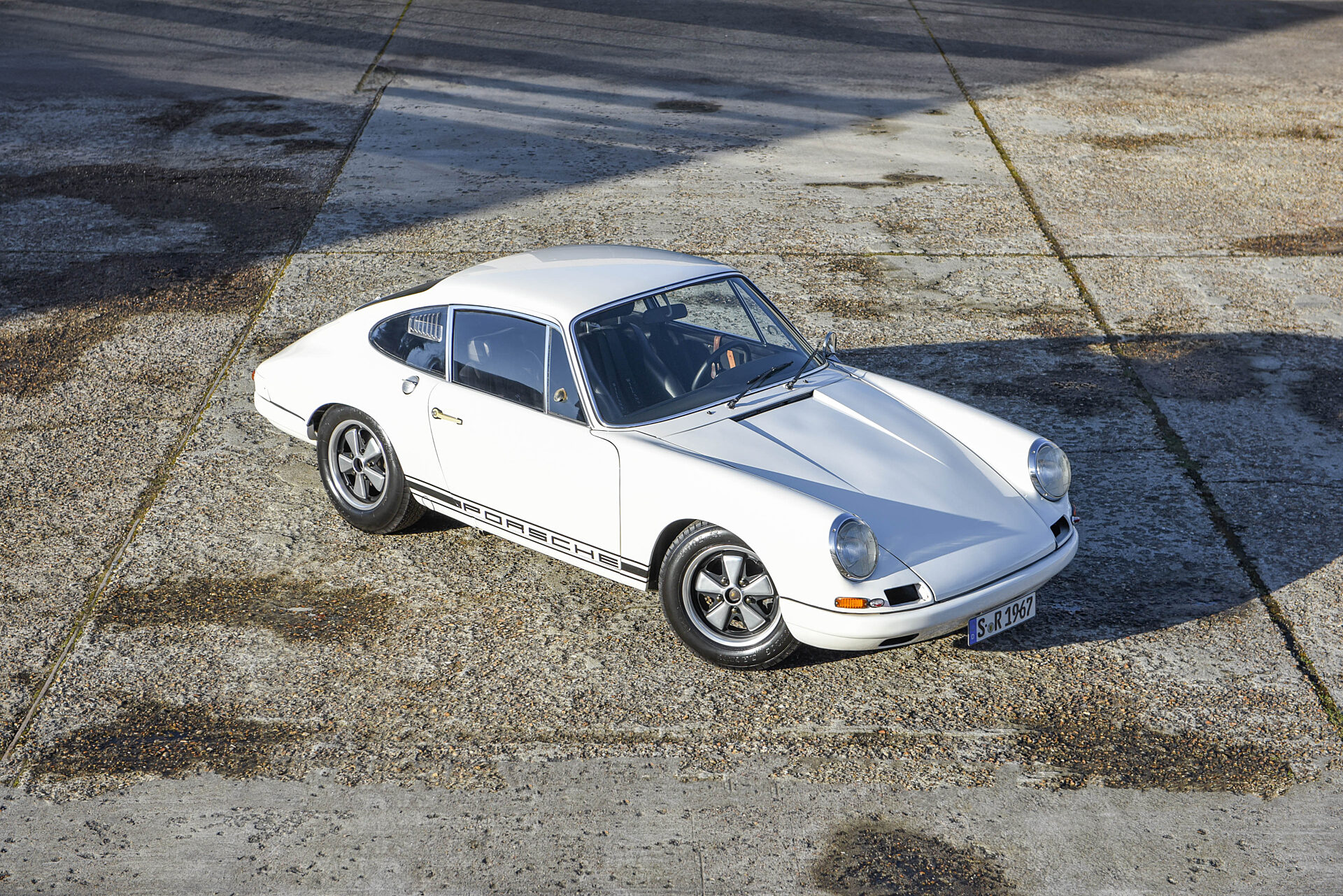
Porsche1967911 R
- Factory 911R
- The only unrestored 911R in the world
- One of only 20 911R's ever built
The beginnings
Barely five months after production had begun in September 1964, Porsche’s new 911 model commenced its illustrious competition career in the 1965 Monte Carlo Rally. A solitary newly-homologated 911 was entered for veteran Porsche factory driver and engineer Herbert Linge, to be co-driven by his colleague - and future Head of the Racing Department - Peter Falk. The event experienced some of the worst weather in its history, with only 35 of the original 237 starters reaching the finish, but the pair finished in a remarkable fifth place overall and secured a valuable GT class win.
It was with the introduction of the 911S model in mid-1966 that the 911’s competition successes really began to gather momentum, with a GT class win at Le Mans on its International race debut being followed by further wins at Daytona, Sebring, the Targa Florio, Nurburgring and Le Mans again in 1967. That same year, Vic Elford secured the European Rally Championship for Porsche, whilst also finding time to win his class in the concurrent British Saloon Car Championship driving a 911T. Outright victory came Porsche’s way at the Spa 24 Hours in July courtesy of locals Jean-Pierre Gaban and “Pedro”, whilst Toni Fischhaber also ensured that the 911S made its presence known in the 1967 European Mountain Championship by winning the GT class at six out of the eight rounds, comfortably securing the class championship.
After just two years, Stuttgart had already proven the 911 across all four major competition disciplines: circuit racing, road racing, rallying and hillclimbing. However, the appointment of the fiercely determined Ferdinand Piëch - grandson and namesake of the founder of the company - as Porsche’s Head of Research and Development in 1966 ensured that development of the 911 would continue apace. Under his watchful and demanding eye a 911 project would, for the first time, be conceived and constructed from scratch in the Race Department:
the 911 R.
The Piëch-connection
One of the pre-eminent figures in the history of the European motor industry, Ferdinand Piëch was born in 1937 to Anton and Louise Piëch; the latter Ferdinand Porsche’s only daughter. After graduating with a degree in mechanical engineering from the Swiss Federal Institute of Technology in Zurich in 1962, he joined Porsche the following year before being promoted to head of Research and Development in 1966, aged just 29. Having been central to the design and development of the 906 - which had been an unqualified success - Piëch was well placed to drive forward the development of the new 911 model, and was keen to capitalise on his powerful family connections in order to facilitate this.
The 911 R project was his brainchild, and it was no coincidence that its powertrain and the myriad weight-saving techniques employed on the “R” borrowed heavily from the 906.
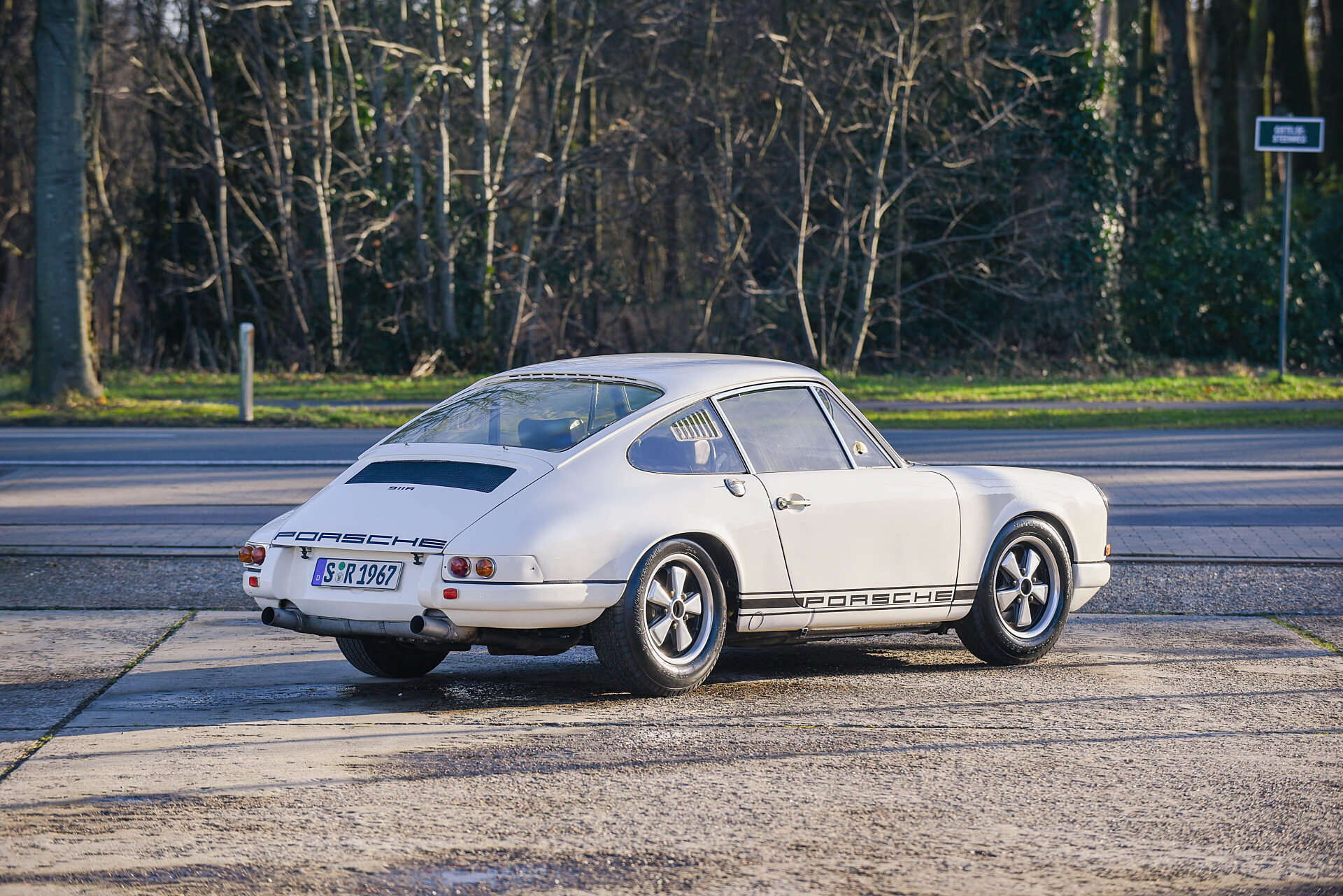
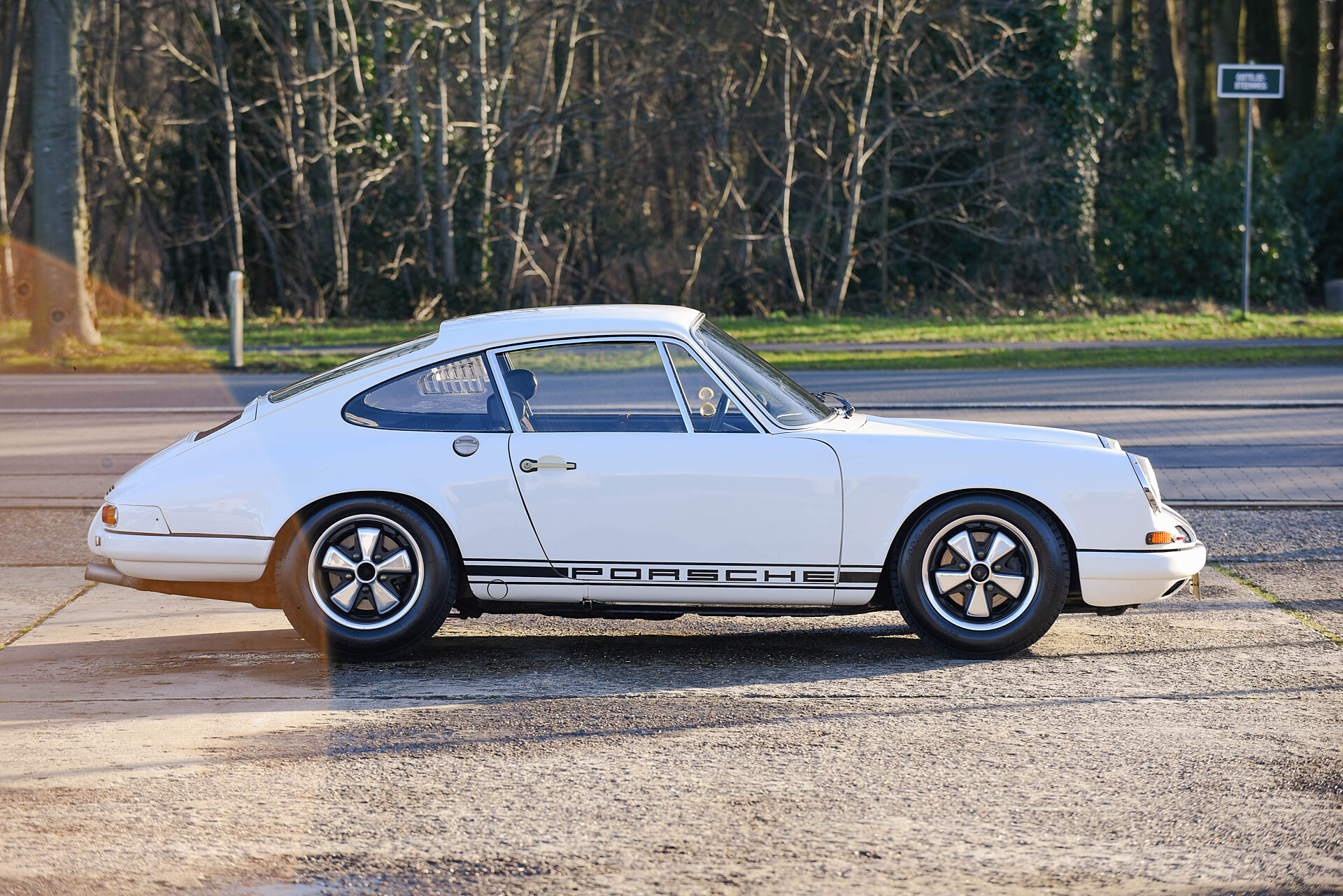

The 911R
In early 1967, Porsche embarked upon its ambitious 911 R programme which, following subsequent pessimism from the Sales department as to whether the 500 cars required to obtain homologation could actually be sold, would ultimately encompass the construction of just 24 cars. Four factory prototypes - numbered R1 to R4 - were constructed on repurposed 911S chassis, whilst a further 20 bespoke examples were designated 11899 001R to 11899 020R inclusive. Such limited production would restrict the car to competing in International events as a prototype rather than a GT, but did at least give the factory engineers free rein to develop each car on a chassis-by-chassis basis. Substantially retaining the silhouette of the standard 911, the cars made full use of the factory’s proverbial prototype parts bin and were extensively lightened with the aim of meeting a target weight of just 800 kilograms - some 240 kilograms lighter than the standard 911S model. The majority of 911 R chassis were fitted with 2 litre type 901/22 engines similar to that of the 906 prototype and were destined exclusively for competitive use. However, there were two notable exceptions: chassis 016R was originally fitted with a road-going (either 901/02 or 901/10 specification) engine; whilst chassis 020R was ordered by Woolworth’s heir and former Scarab Cars constructor Lance Reventlow ostensibly for use as a road car, albeit still with a 901/22 specification engine fitted. Porsche even experimented with powering a 911 R with a fuel injected, quad-cam Type 916 unit - in effect, a half size version of the engine which would ultimately go on to power the legendary 917 - although the consequent increase in weight and complexity ensured it was not considered a significant improvement over the preferred 901/22 option.
Although retaining the standard 2 litre 911 capacity of 1,991cc, the 901/22 engine had little else in common with the units fitted to production models, with magnesium alloy replacing silumin as crankcase material and titanium connecting rods replacing the steel ones of the standard engines. Furthermore, hollow sodium-filled valves were used in the 906-derived unit to reduce top end mass and improve driveability, whilst a twin-plug ignition system was also utilised. These significant modifications not only reduced the overall weight of the engine, but also increased power to some 210 bhp at 8,000 rpm, as opposed to a mere 130 bhp for the original 1964-specification 911 and 158 bhp for the 1967-specification 911S.
Elsewhere, the 911 R made extensive use of lightweight detachable panels to further trim weight down. Although the tub’s centre section remained in steel, the doors, front wings, bumpers, bonnet and engine compartment panel were all manufactured from glassfibre reinforced polymer by the Stuttgart firm of Karl Bauer. Specially developed four-millimetre-thin glass was utilised for the windscreen, whilst plexiglass of only half this gauge was used for both the door and rear quarter windows, with window winders removed to further save weight. The cockpit was stripped of all extraneous equipment such as sound deadening, carpets, passenger side sun visor, ashtrays and even the cigarette lighter, whilst lightweight plastic door handles and small circular rear lights were employed externally - all in the name of weight saving.
Other detailed differences were so discreet as to be invisible to anyone but the most well-informed: a standard looking 911 tachometer was retained - albeit reading to 10,000 rpm rather than the usual 8,000 - whilst slightly wider Fuchs wheels were utilised, with the rear wheel arches widened to suit. Finally, an external oil filler was positioned to the rear of the passenger side door, feeding a dry-sump tank the contents of which were cooled by a front wing mounted oil cooler - as opposed to the rear mounted item of the standard car.
911R – 002R as a Porsche works car
This particular example - chassis number 118.9.9002 R - was, according to its factory “Kardex” delivery record, officially completed on 6 November 1967. Finished in the colour of Hell Elfenbein Weiss (“Light Ivory”), it was powered by 901/22 specification engine number 508 0004 and was fitted with gearbox number 928 4012. In fact, the Kardex completion date is somewhat misleading as the first five chassis in the sequence - on occasion referred to as factory cars - were all assigned the same completion date, with the remaining chassis being completed sequentially from 006R onwards. Indeed, 002R had already been used as a backup car in the Monza Record attempt of late October 1967 (see below), which suggests that the actual date of completion was in fact well before that recorded on the Kardex. Furthermore, it would also appear that somewhat perversely, 002R was completed out of sequence ahead of 001R, although the latter was present in Monza for the record attempt as well.
Second owner: 002R in Ethiopia
On 29 September 1969, 002R was sold to Dr. Mario Daolio, an Italian Doctor based in Asmara, Ethiopia. Intriguingly, the sale is supported by an invoice from Porsche to Daolio - apparently personally signed by project mastermind Ferdinand Piëch himself - which refers to the car as a “Versuchswagen” (test car), sold less engine, gearbox and seats and with “Karosserieschaden” (body damage). Regrettably, it is not known exactly how this body damage occurred, but it is nevertheless evidence - as if it were needed - of the rigours to which 002R had been subjected during its life as a factory test car.
Subsequent to the car’s delivery to Asmara, Daolio arranged to purchase a new 901/22 specification engine, serial number 508 0022, which is retained with the car to this day - albeit as a spare, so as to preserve 002R’s priceless originality. Accompanying the new engine to Africa was a corresponding 911 R gearbox, and a replacement pair of correct “Scheel” driver’s and passenger’s seats.
Evidently 002R was raced only once in Ethopia, by Daolio’s friend (and six-time Eritrean Champion driver) Nino Ronzoni, in the XII Circuito di Taulud road race of 28 December 1969. Ronzoni lined up alongside the pacesetting ex-works Porsche 906 (chassis number 906-142) of Alberto Falletta - which was also owned by Daolio - and ahead of the Abarth OT2000 of Lino Rossi. In a contemporary race report in Autosprint Magazine, mention is made of the wily Ronzoni harrying Falletta mercilessly in the early stages, the 911 R coping – in a fitting parallel with the ’67 Monza record attempt - rather better with the bumps of the city track than the 906. Regrettably, the report does not mention what became of Falletta, but at the finish it was Rossi who took the Laurels, with Ronzoni second in 002R.
In a letter to the car’s current custodian back in 2008, Dr. Daolio confirmed that he never raced the car, but did drive it frequently on the local roads, commenting that:
“I never participated in competitions (with the car) because I did not think I was up to it, but I enjoyed taking drives both with my 911S and with the 911 R, for which I was provided with a special permit, being the doctor of the Eritrean Police.”
Some years after receiving the correspondence from Dr. Daolio, 002R’s present owner tracked down Ronzoni’s son Roberto, who shared with him several pages from his late father’s racing scrapbook, a sample of which is shown overleaf. Dr. Daolio retained the car for some 15 years, retiring from his Asmara-based role and returning to Italy, together with his family and 002R, in 1980.
Third owner: 002R in Japan
In 1984, Dr. Daolio was contacted by renowned Japanese Porsche afficionado and collector Jun Ueda, who convinced him to sell the car. The car was transported to its third continent of ownership later that year, and was first registered in Tokyo on January 9, 1985. An intensely private collector, it would not appear that Mr. Ueda used the car a great deal, although there are anecdotal accounts of 002R appearing occasionally at Porsche Club of Japan events from time to time.
It is understood that in 2006, Mr. Ueda decided to sell several of the cars from his collection, including 002R, and appointed Symbolic Motor Car Company of La Jolla, California to handle the transaction. The car was transported from Tokyo to California, the official US Customs clearance documents of 16 October of that year noting that the odometer of the car read just 32,969 kilometres at this point and that the car’s weight was 880 kilograms - exactly in line with what one would expect for a 911 R.
Fourth owner: 002R in Belgium
On March 6th 2007, 002R returned to Europe for the first time in more than two decades to join an immaculately curated, Porsche 911- focussed collection in Belgium. The current custodian is a stickler for authenticity and originality, and was adamant that the car should be mechanically refreshed yet remain cosmetically untouched.
Comprehensive system checks were carried out to the oil, fuel, hydraulics and electrical systems prior to running the car for the first time in its new ownership, as the car had been run only occasionally by Mr. Ueda and its new owner was keen to avoid any damage being incurred as a result. Furthermore, every part condemned as no longer fit for purpose was retained, noted and replaced with indistinguishable new old stock or period correct components. During the summer of 2007, the engine (number 508 0022) which Dr. Daolio had obtained and fitted to the car in 1969 was removed from 002R for safekeeping; its crankcase stored in an oil bath so as to preserve the then 40-year old magnesium from harmful oxidation. An unnumbered new old stock 2-litre silumin crankcase was sourced and a new engine built up incorporating the original cylinder heads and twin-plug ignition system. Indeed, the 216 bhp recorded on the dynamometer for the replacement engine was eassuringly close to the 210 bhp originally quoted for the original 901/22 unit, and once re-fitted was visually indistinguishable from the original.
Perhaps the only area in which 002R was not correct as at the time of purchase was that of the later type Fuchs wheels fitted. The owner therefore took great care to source a set of period correct items from the USA, which even bore the correct date stamp for 1967 and were presented in their original packaging with the correct spacers. It subsequently emerged that these rims had been previously stock belonging to the world-renowned Fuchs restorer Harvey Weidman, of Oroville, California.
During its current ownership, 002R has been used sparingly for a handful of Track Days, Concours d’Elegance and official Porsche engagements, but has not been used in competition in order to preserve its priceless originality.
002R in events
A particular highlight took place in 2008 when double Porsche Le Mans winner and former Grand Prix driver Gijs van Lennep drove 002R at a test day at the Circuit d’Abbeville, France, reliving old memories of “R2” which he and Vic Elford had driven to such effect at Mugello some 41 years earlier.
In June 2013, 002R was loaned to the Porsche Museum in Stuttgart where it formed part of the “50 Jahre Porsche 911” celebrations. Later that year, the car participated in the Museum’s “Sound Night” during which it was started in front of the assembled Press and Porsche VIPs to demonstrate the 911 R’s evocative engine noise.
Chassis 002R was once again involved on official Porsche duties in 2015. After a hiatus of 48 years, Porsche - possibly as a response to the less than entirely positive press reaction to the recently launched 911 GT3 and GT3 RS - embarked upon a reinvented, back-to-basics 911 R tribute, appropriately christened the 991R. In essence, the 991R was a GT3 with a manual gearbox and GT3 RS-specification engine, but without a rear wing. It was a discreet “street fighter” of a car which, in perhaps the ultimate compliment to its forebear, tipped the scales some 50 kilogrammes lighter than the RS, and jettisoned a significant amount of sound deadening material in the name of weight saving.
Ever conscious of their rich history, Porsche AG approached the present owner of 002R with a view to it being used in the publicity material for the 991R, something to which he was only to happy to consent. Chassis 002R was therefore transported to the Sustenpass in Switzerland in September 2015 where it was driven alongside the new car, subsequently appearing in official Porsche photographs and video footage for global publication.
A further anniversary of particular poignance was the return of 002R to Monza in October 2017, to celebrate 50 years since its involvement in the Monza Record attempt. Sadly, neither Siffert nor Spoerry reached old age, and Steinemann was the last of the four drivers involved to pass away as long ago as 2003, but nevertheless 002R was taken around the fabled banking to commemorate their remarkable achievement.
That the car’s present owner drove it to Monza on the road - as had been the case five decades earlier - stopping at the Stuttgart factory to pick up his new 991R en route, merely added to the sense of occasion.
Chassis 002R has also appeared in myriad static displays and Concours, including the 2016 Goodwood Festival of Speed - where it appeared alongside the 991R on the Porsche GB stand - and at the 2016 Schloss Bensberg Classics, where it formed part of the centerpiece Porsche display. Furthermore, it has also participated in the 2016 and 2018 editions of the Knokke Zoute Concours d’Elegance and the 2019 Rennsport Collective display at Donington Hall, where it was awarded “Best in Show”.
In terms of sheer results, there are undoubtedly more illustrious competition variants of the Porsche 911 than the R; the 911 Carrera RS, RSR and 935 to name but three. But this is arguably to miss the point; without the 911 R, there may not have been an RS, RSR or 935. Its intimate involvement with the race department - with the great engineering brains of the day; Piëch, Bott, Flegl and Falk - meant that new ideas were tried and lessons learned, many of which would manifest themselves in the development of the 911 for years to come. Perhaps, paradoxically, one of the lesser known competition 911s is - in historical terms - actually one of the most significant?
On an individual level, 002R remains without parallel; a veteran of just one known competitive outing, preserved in as original condition as any 53-year old racing car can rightfully expect to be.
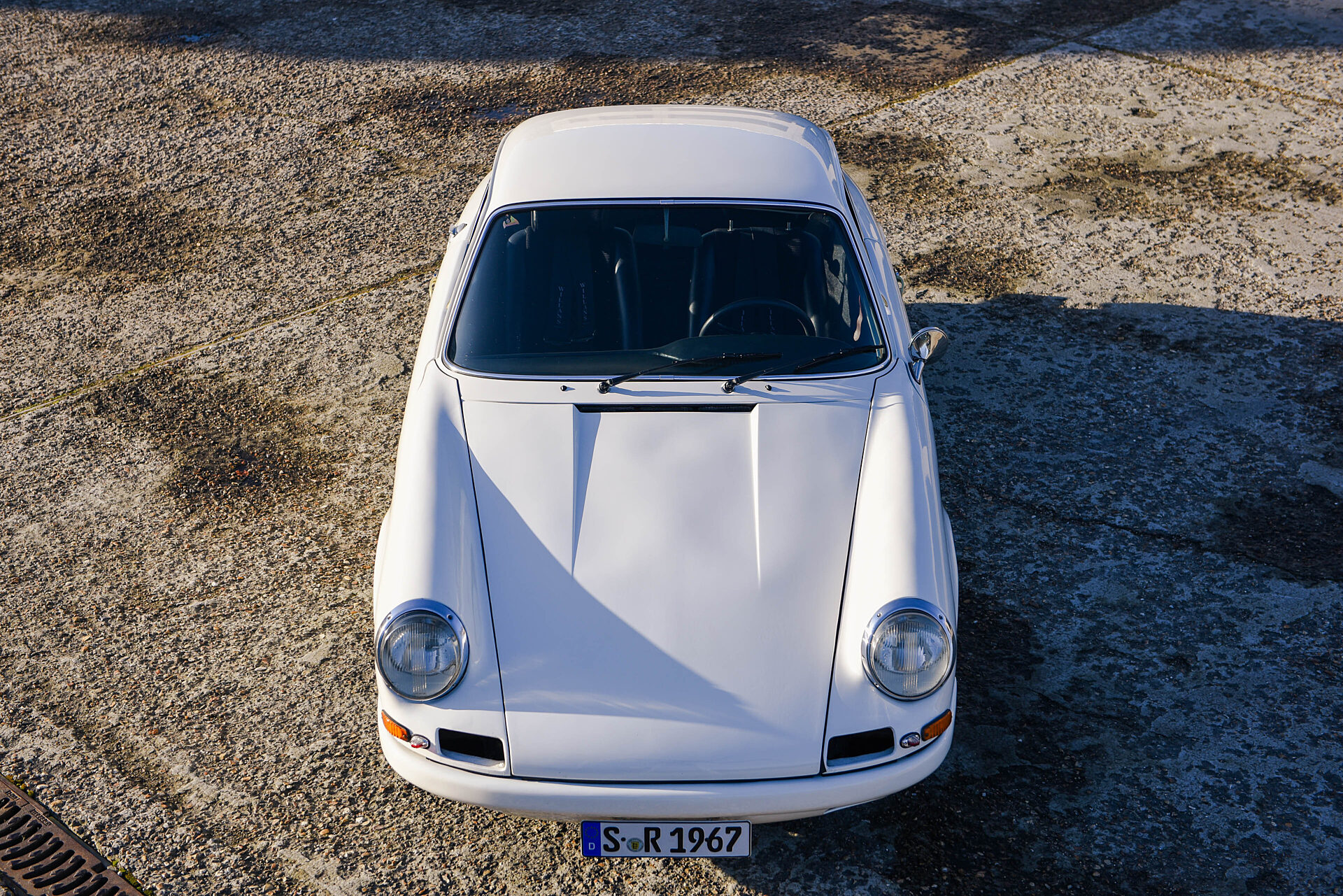
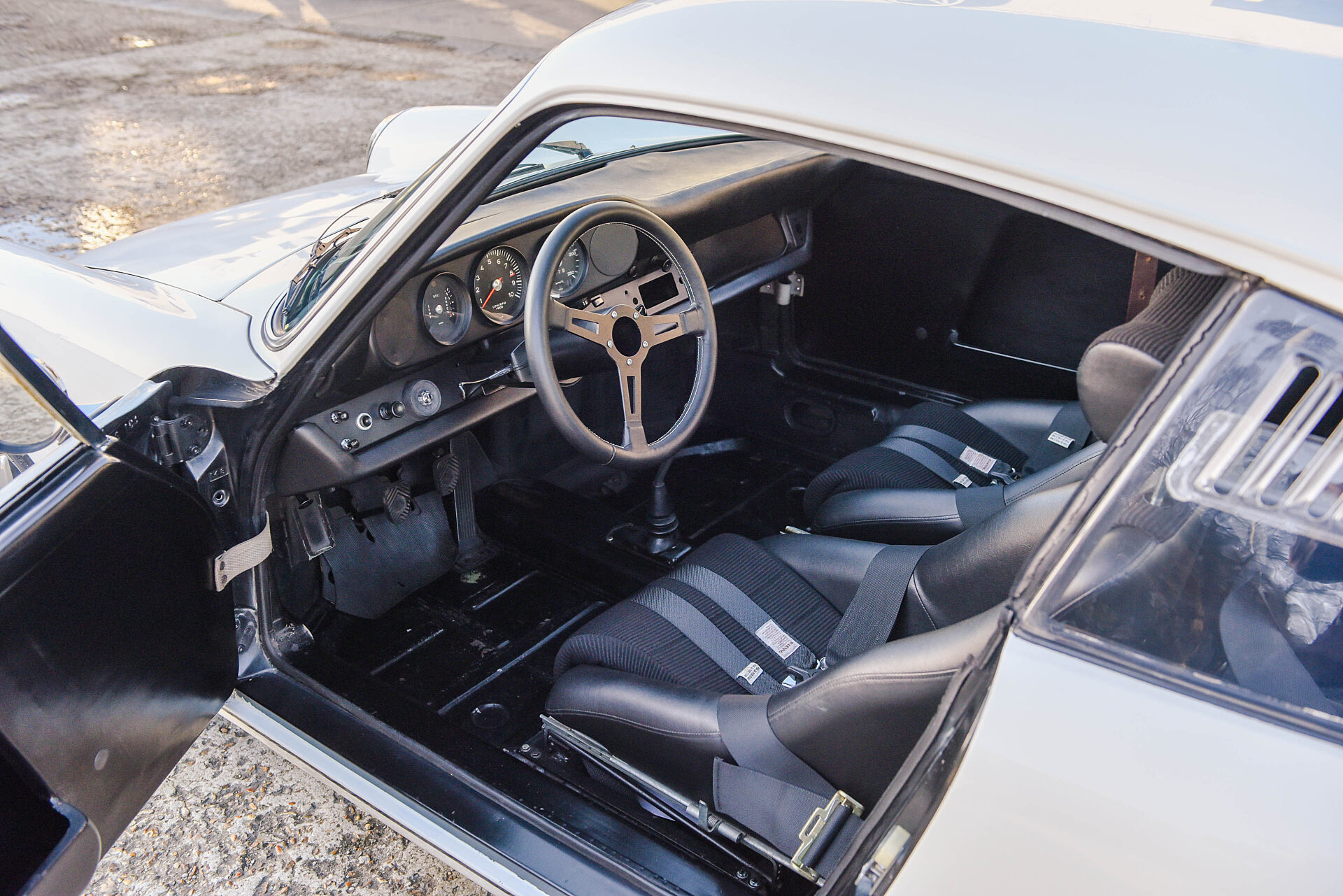
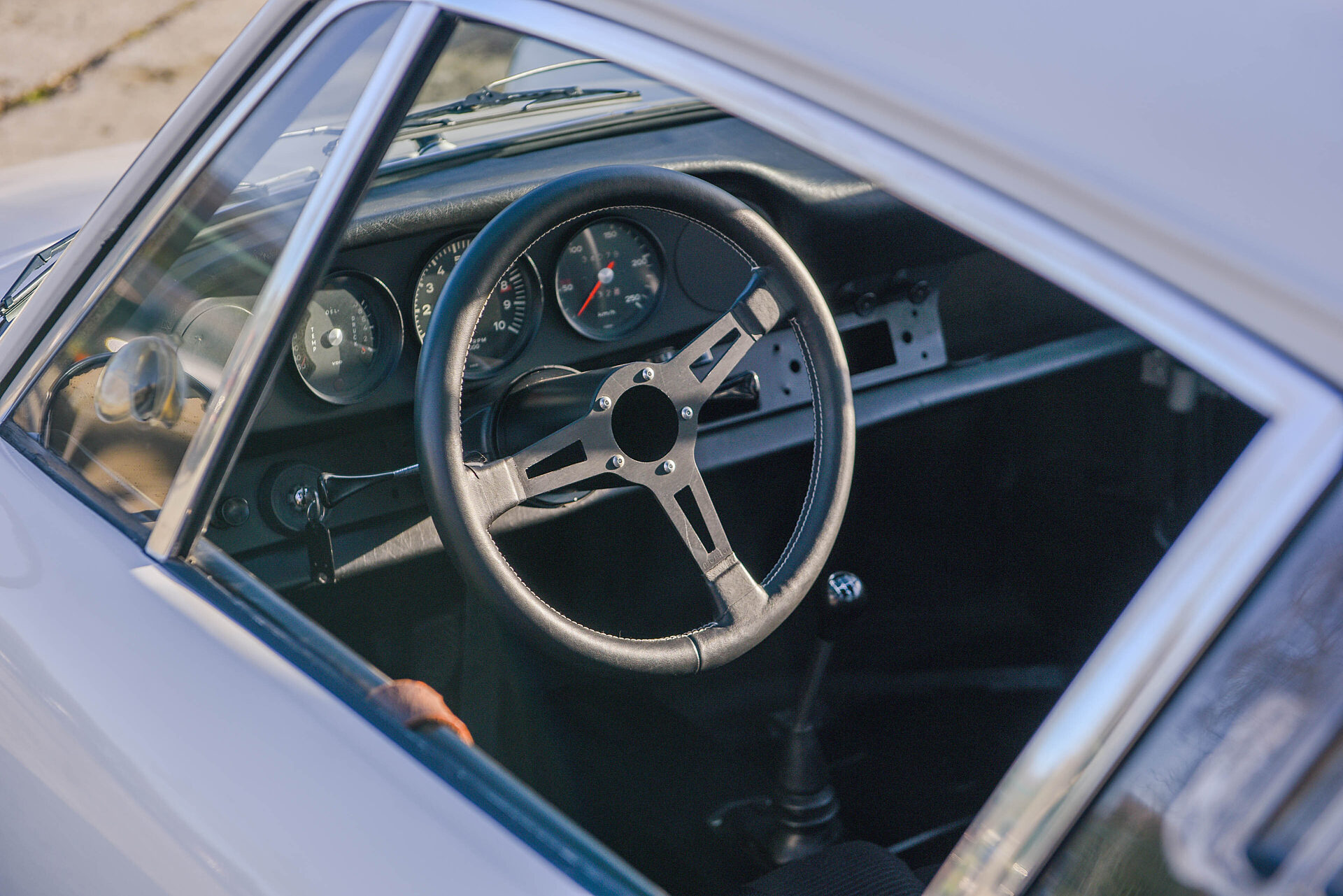
002R Final
Impeccably and sympathetically maintained by just three private owners since leaving the factory’s care in 1969, it remains the only unrestored 911 R of the dashing two dozen and - certainly if soul were to determine desirability - a car without equal.
The car comes with:
- An original 911R exchange parts list
- A book dedicated to this 002R
- The Magnesium R-bloc in a crate
- A bunch of period pictures
- A bunch of new pictures
- Digital video’s of the car
- The sales letter of when new
- The Kardex of the car
- The owners’ manual
This once in a lifetime opportunity is now available at Rock 'N Roll Classics.
Interested in this Porsche?
Leave your data in this form and we’ll get in touch. Or: give us a call and find out immediately!
+32 (0)50/73 75 71sales@rnrclassics.be
Do you have a similar car for sale? We’re interested!










